If your camera is missing from Device Manager, it can be frustrating—especially if you rely on it for work, online meetings, or streaming. This guide provides not just common solutions but also unique troubleshooting methods that go beyond the usual fixes.
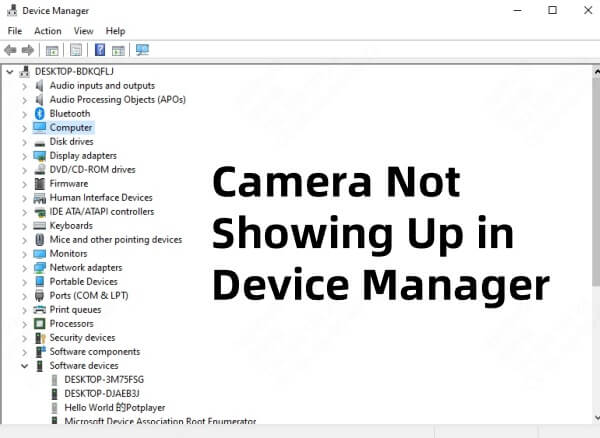
Part 1. Why Your Camera Is Not Showing Up in Device Manager
Before jumping into solutions, let’s explore why your webcam may have disappeared:
✅ Hardware Connection Issues – Loose internal connectors (for built-in cameras) or faulty USB ports (for external cameras).
✅ Disabled Device in BIOS/UEFI – Some manufacturers allow disabling webcams at the firmware level.
✅ Corrupt or Missing Camera Drivers – Drivers might be outdated, missing, or improperly installed.
✅ Windows Privacy Settings Blocking Camera – The camera may be restricted from being accessed by apps.
✅ Malware or Software Conflicts – Some programs or security software can block the camera.
Part 2. How to Fix Camera Not Showing Up in Device Manager
The camera not showing up error could stem from various causes, including driver conflicts, system settings, or hardware problems. Below are detailed fixes to help you resolve the problem effectively.
Fix 1. Check for Hidden Devices in Device Manager
Windows sometimes marks disconnected or disabled devices as hidden, making them invisible in Device Manager by default. This can happen if the camera was previously unplugged or disabled without proper removal. By revealing hidden devices, you may find your camera listed and enable it again.
Steps:
Press Win + X and select Device Manager.
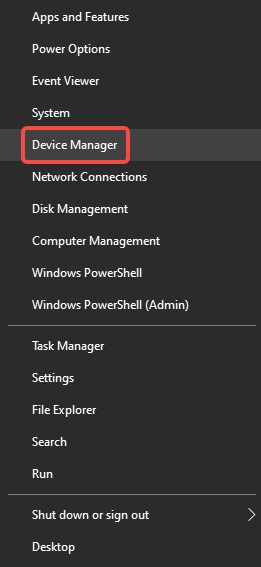
Click View > Show hidden devices.
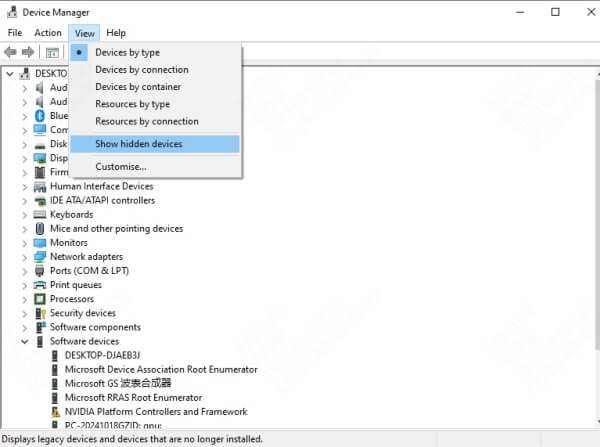
Expand Cameras or Imaging devices.
If your camera appears, right-click it and select Enable Device.
Restart your PC and check if the camera is now detected.
Bonus Tip: If you see a grayed-out camera, uninstall it and restart your PC to force Windows to reinstall the driver.
Fix 2. Enable Camera from BIOS/UEFI
Some laptops and pre-built PCs allow the camera to be disabled in the BIOS/UEFI settings, often for privacy reasons. If the camera is turned off at this level, it won’t appear in Device Manager, no matter what you try in Windows. Accessing the BIOS and ensuring the camera is enabled can resolve this issue.
Steps:
Restart your PC and press the BIOS key (F2, Del, Esc, or F12, depending on your manufacturer).
Navigate to Advanced Settings, Integrated Peripherals, or Onboard Devices.
Look for an option like Onboard Camera, Webcam, or USB Camera and ensure it is Enabled.
Save changes and exit (usually F10).
Boot into Windows and check Device Manager again.
Fix 3. Reinstall Camera Drivers Manually
Corrupted, outdated, or improperly installed drivers are a common reason why a camera is not showing in Device Manager. Windows may fail to recognize the camera if the drivers are damaged. Manually reinstalling them forces Windows to refresh the driver installation, which often resolves detection issues.
Steps:
Open Device Manager (Win + X > Device Manager).
If the camera is listed under Cameras or Imaging devices, right-click it and select Uninstall device.
If not listed, expand Other devices and look for any unknown devices (marked with a yellow exclamation mark). Right-click and uninstall them.
Restart your PC—Windows will attempt to reinstall the drivers automatically.
If the camera still doesn't appear, visit your manufacturer's website to download the latest drivers manually.
Pro Tip: If you don't know your camera model, run this command in Command Prompt:
wmic path Win32_PnPEntity where "Name like '%camera%'" get Name,DeviceID
This will display your webcam’s hardware ID, which can help you find the correct driver.
Fix 4. Update or Fix Camera Driver with PcGoGo Driver Sentry
Manually updating drivers can be time-consuming, especially if you're unsure which driver version is correct. PcGoGo Driver Sentry simplifies this process by automatically scanning, detecting, and installing the right drivers for your system. It also fixes broken or missing drivers, ensuring your camera works seamlessly.
Why This Works:
Automatically identifies outdated or missing drivers.
Downloads the latest manufacturer-approved drivers.
Fixes driver conflicts that prevent camera detection.
Steps:
Download and install PcGoGo Driver Sentry.
Launch the program and click Scan.
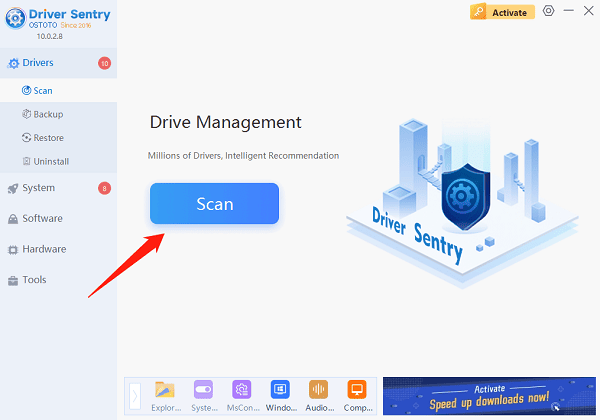
Review the scan results—if camera drivers are flagged, click Update All.
Restart your PC and check Device Manager again.
Fix 5. Check Privacy & Security Settings
Windows includes strict privacy controls that can block apps from accessing the camera. If these settings are misconfigured, your camera may not appear in Device Manager or function in applications. Ensuring proper permissions are enabled can restore access.
Steps:
Open Settings (Win + I) and go to Privacy > Camera.
Under Camera access, toggle Allow apps to access the camera to On.
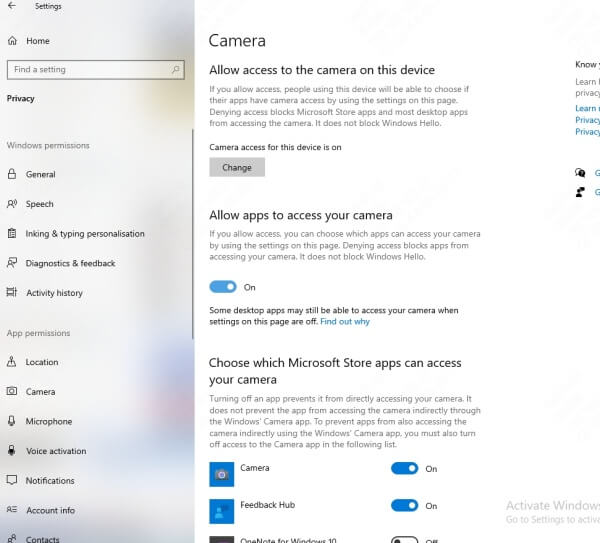
Scroll down to Allow desktop apps to access your camera and enable it.
Check individual app permissions below and ensure your desired apps (e.g., Zoom, Teams) have camera access.
Restart your PC and test the camera again.
Quick Fix: If you see an error like "No cameras detected", toggle camera permissions OFF and ON to reset it.
Fix 6. Use Windows PowerShell to Reinstall Drivers
If Device Manager fails to detect the camera, Windows PowerShell can force a driver reinstallation by scanning for hardware changes and reinstalling missing drivers. This method is useful when standard troubleshooting doesn’t work.
Steps:
Right-click the Start button and select Windows PowerShell (Admin).
Type the following command and press Enter: pnputil /scan-devices
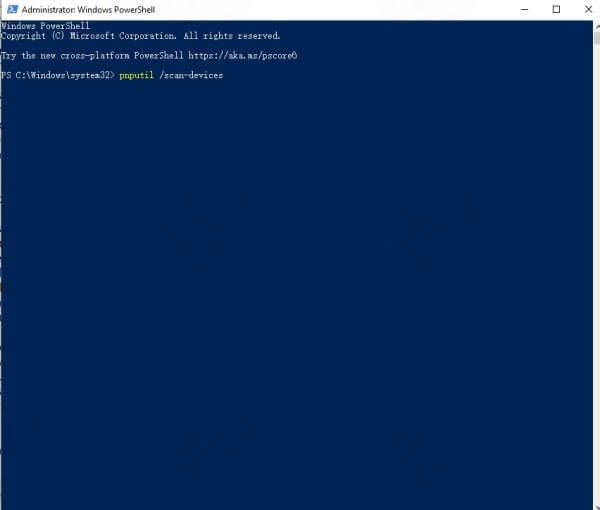
Wait for the scan to complete—Windows will attempt to reinstall any missing drivers.
Restart your PC and check if the camera appears in Device Manager.
Fix 7. Scan for Malware or Third-Party Conflicts
Malware or conflicting software (especially security programs) can disable hardware components, including the camera. Running a full system scan and temporarily disabling third-party antivirus software can help determine if this is the issue.
Steps:
Open Windows Security (Win + I > Update & Security > Windows Security).
Click Virus & threat protection > Quick scan (or Full scan for a deeper check).
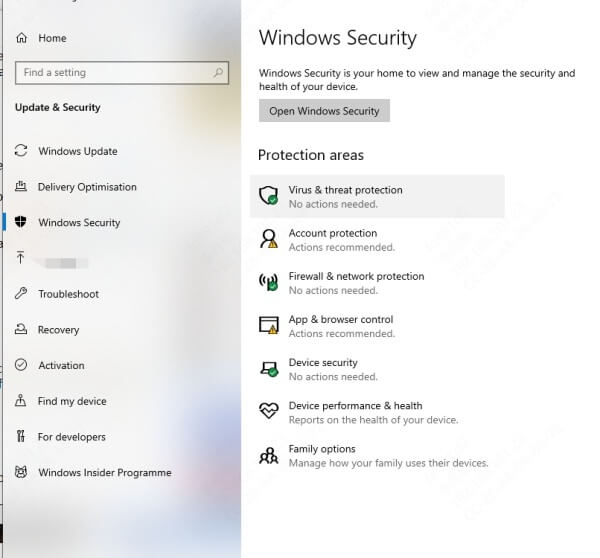
If threats are found, follow the prompts to remove them.
Temporarily disable third-party antivirus software (check its settings or system tray icon).
Restart your PC and see if the camera is detected.
Extra Tip: Check for software like Lenovo Vantage, Dell Command Update, or HP Support Assistant, as they sometimes disable webcams via software settings.
Fix 8. Perform a System Restore or Windows Update Rollback
If the camera stopped working after a recent Windows update or software installation, rolling back to a previous system state can resolve the issue. System Restore reverts your PC's settings to an earlier point without affecting personal files.
Steps:
Type Create a restore point in the Windows search bar and open it.

Click System Restore > Next.
Select a restore point from before the issue started and click Next.
Confirm and proceed—your PC will restart during the process.
After restoration, check Device Manager for the camera.
Final Thoughts
If none of these solutions work, the issue may be hardware-related, especially for built-in webcams. In this case:
Check internal connections (if comfortable opening your laptop).
Try an external USB webcam to confirm if the problem is with Windows or the hardware.
Contact manufacturer support for further assistance.
FAQ
How do I manually add a webcam to Device Manager?
If Windows doesn’t auto-detect it, try connecting it to a different USB port or reinstalling drivers. Some webcams require manufacturer software for full functionality.
How do I reinstall the camera driver?
In Device Manager, right-click the camera and select Uninstall device, then restart your PC. Windows will attempt to reinstall the driver automatically.
What is error 0xA00F4244 (No cameras attached)?
This error means Windows cannot detect any camera. Check connections, update drivers, or verify BIOS settings if the issue persists.
Conclusion
If your camera is not showing up in Device Manager, the problem could be due to driver issues, BIOS settings, or privacy restrictions. Following these fixes—especially using PcGoGo Driver Sentry for automatic driver updates—should restore functionality. For persistent issues, a system restore may help. Download PcGoGo Driver Sentry today to keep your drivers up to date and avoid future problems!